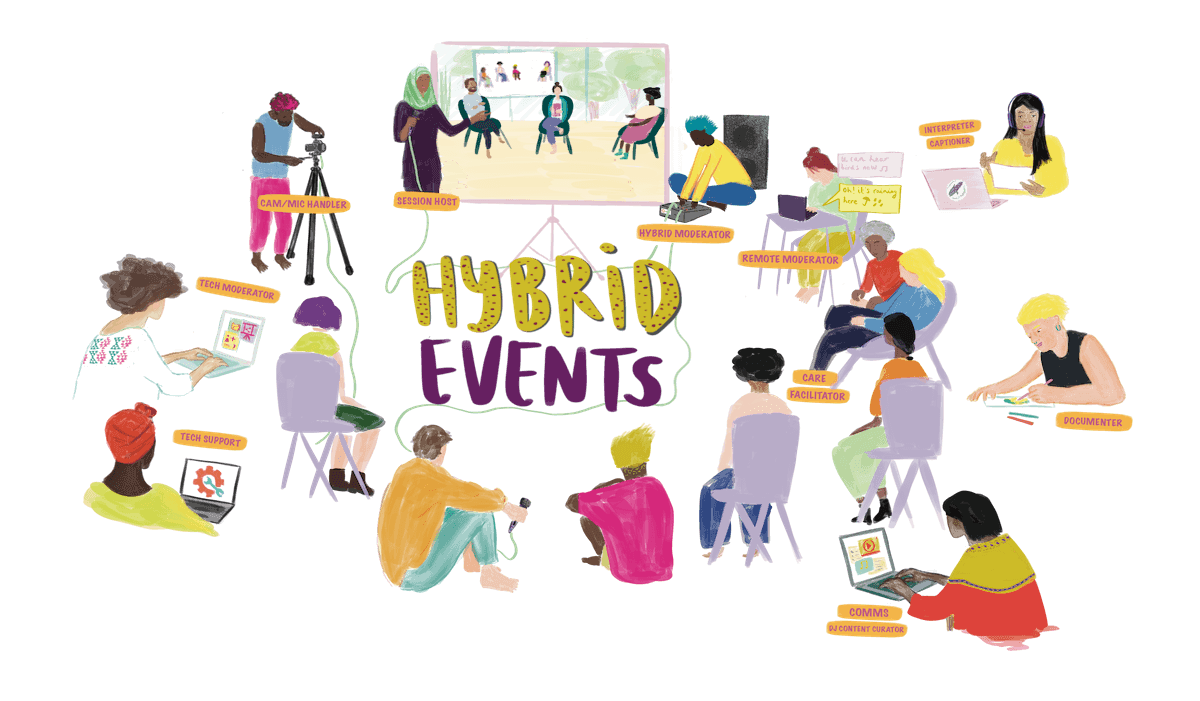Hybrid events
We understand hybrid event as an event that has both on-site and online participants and/or speakers, and where participation and engagement are mediated through and by technology.
Hybrid events have the advantages of allowing more people to participate (especially people with limited resources or in remote locations, those caring for others, or those unable to travel for any other reason), reducing event costs related to travel, and reduced impact on the environment.
A hybrid event has elements of both on-site events and online events by design, forcing you to rethink the space as a combination of both worlds.
One of the key learnings that we have had is that for those participants who are together in a room, it is very easy to forget that there are remote participants, as the physical space is so compelling. Therefore, this new format requires a double effort to plan, run and support the event in such a way that all participants feel part of the event and not disconnected.
In this chapter we will share with you our learnings in designing and running hybrid events with different setups.
A hybrid event is an event combining on-site and remote participants, speakers and/or facilitators.
Remote participants are connected through the internet, a teleconferencing platform, a sound system and/or other mechanisms designed to integrate both “worlds” into one single experience.
An online session where there are remote participants, but where those accessing remotely remain as passive listeners (i.e. in a webinar conference mode) is NOT a hybrid event.
Hybrid events can vary in participant size, duration and methodologies used. But we have identified at least three models of these type of events:
- One on-site group and several independent online participants connecting from their own locations and time zones.
- Two or more on-site groups interconnected via internet in the same time zone, or across different time zones.
- Remote session speakers addressing an on-site participant group.
This chapter covers several aspects of a hybrid event that are suitable for any of the models that you might want to implement.
[1] For more relevant documents you can check the Closer than ever (CTE) section of the APC website



No Comments